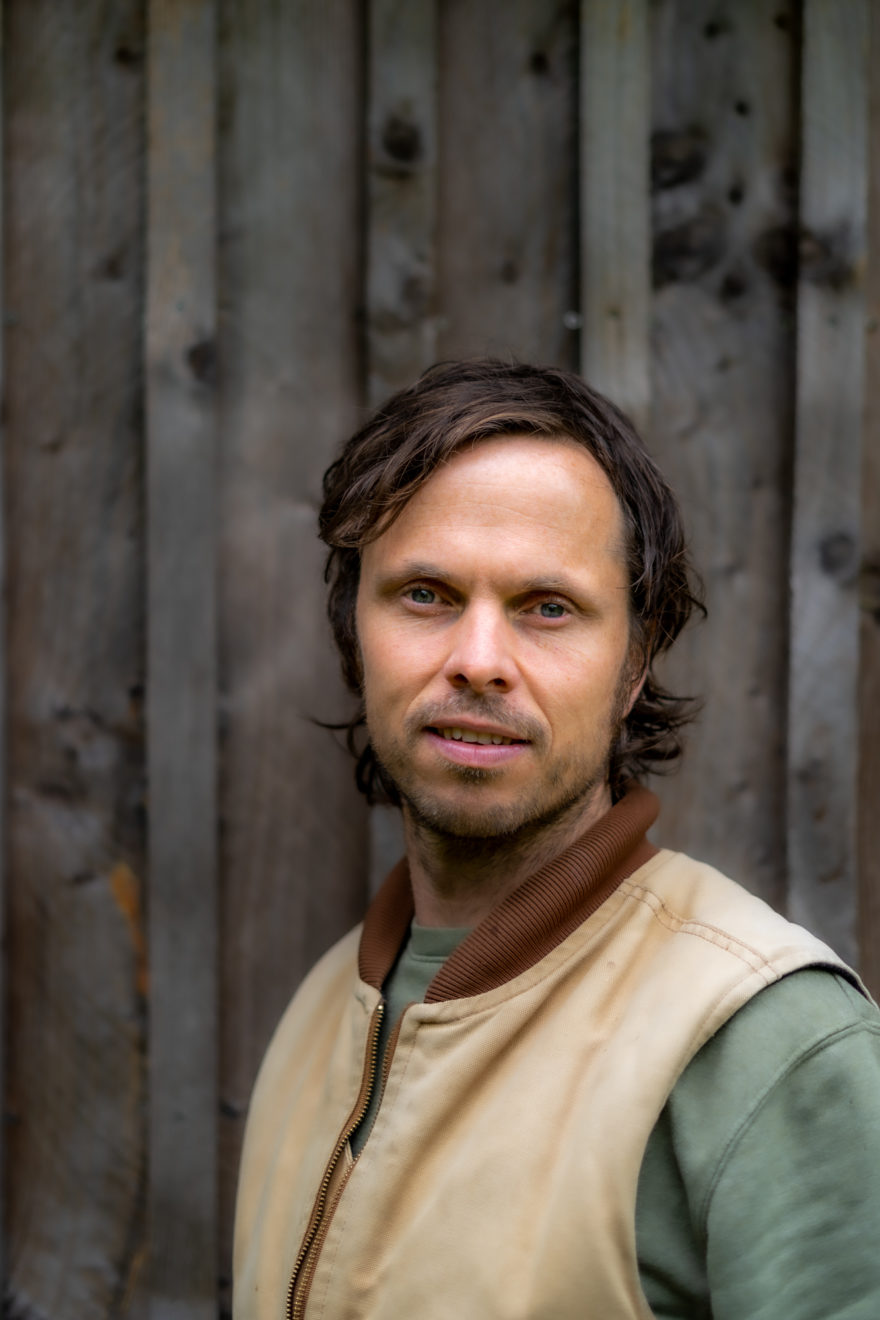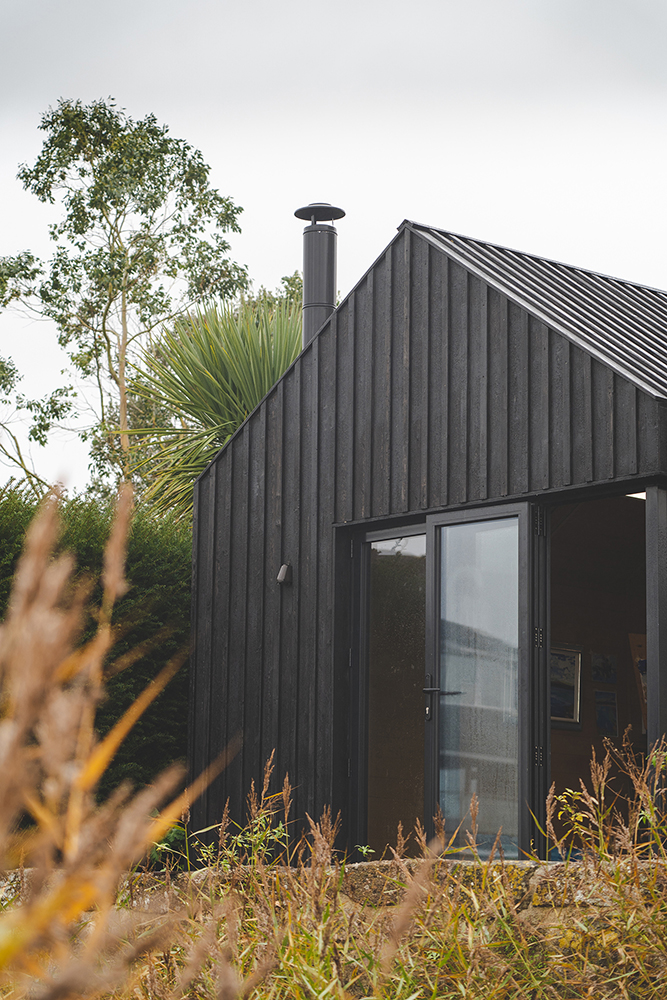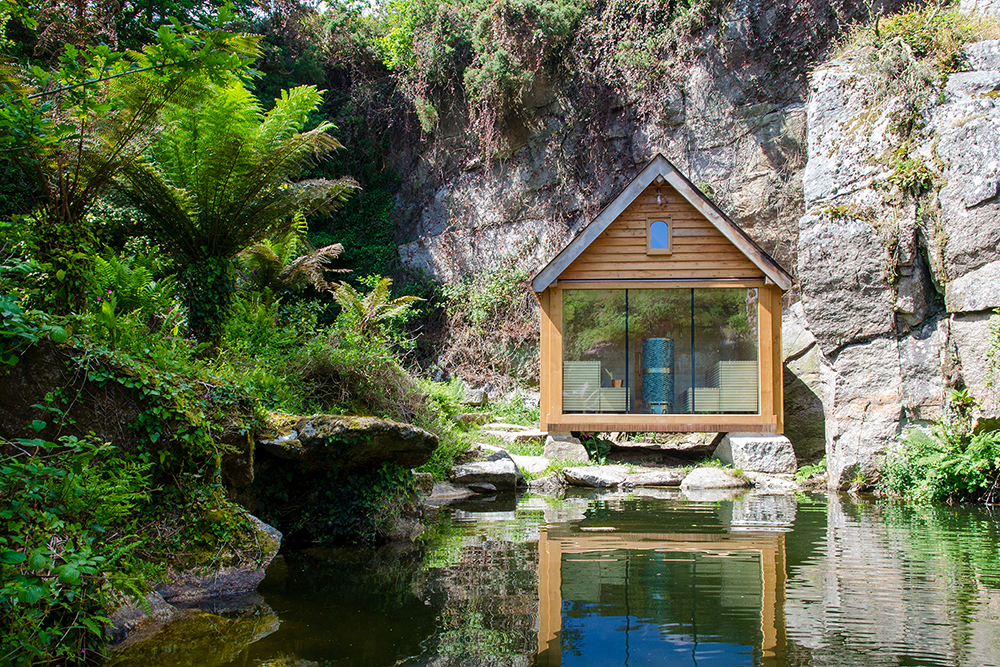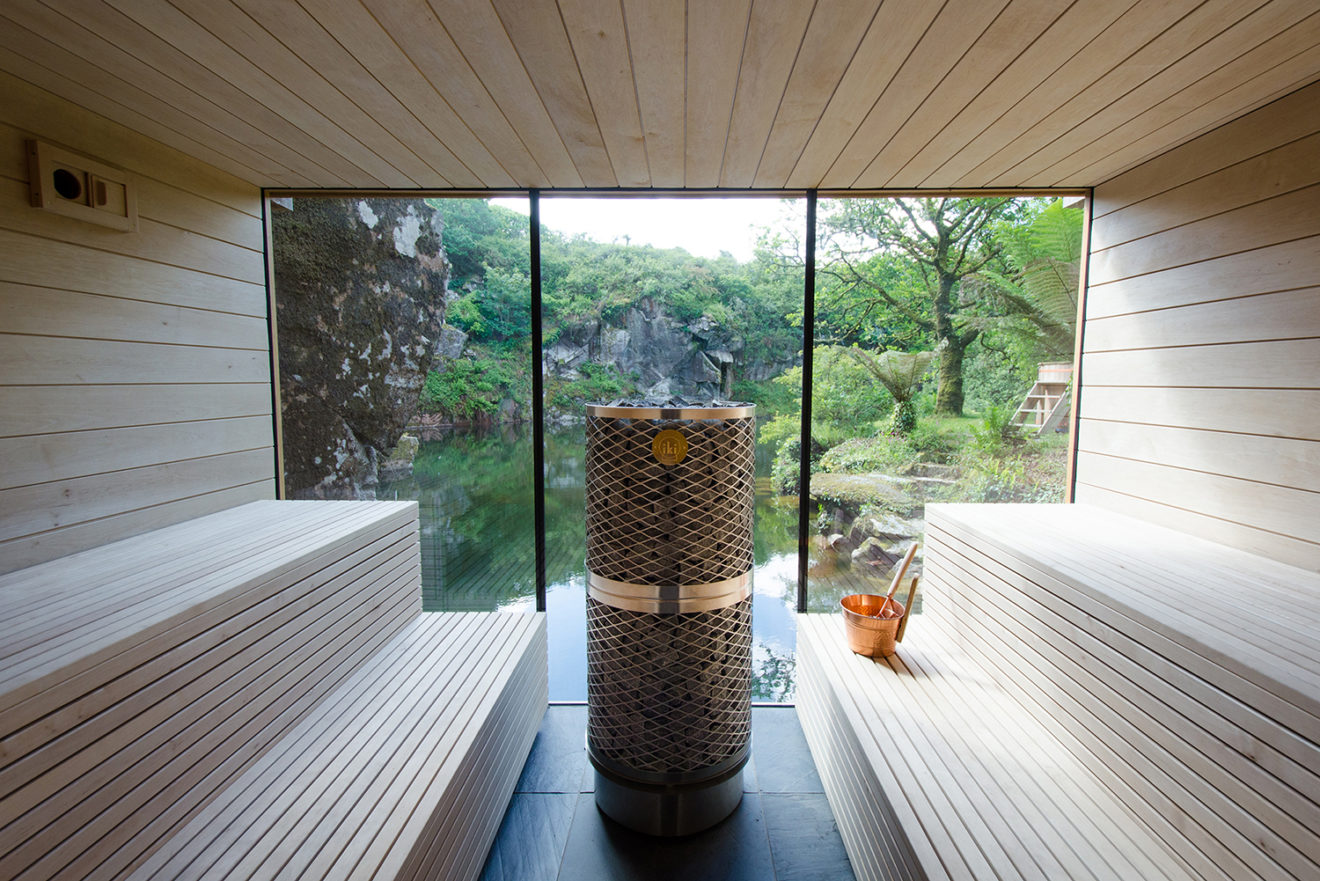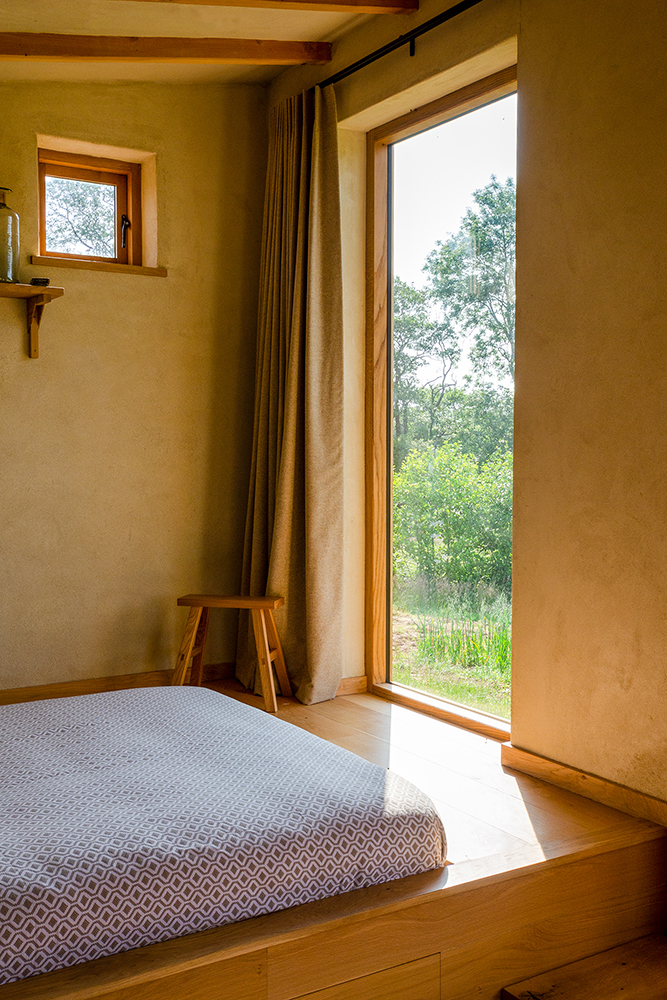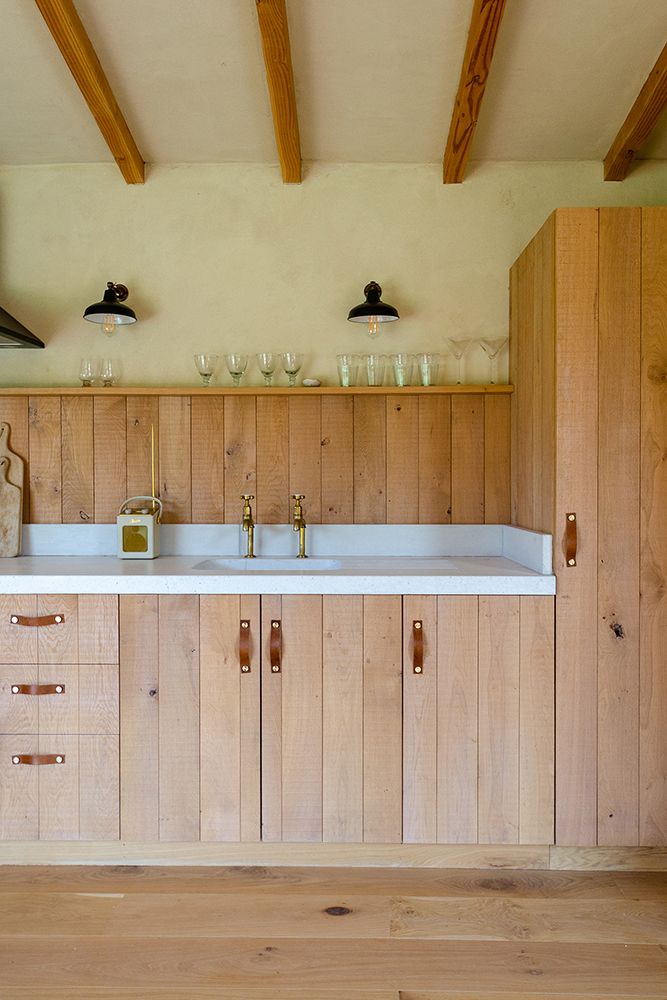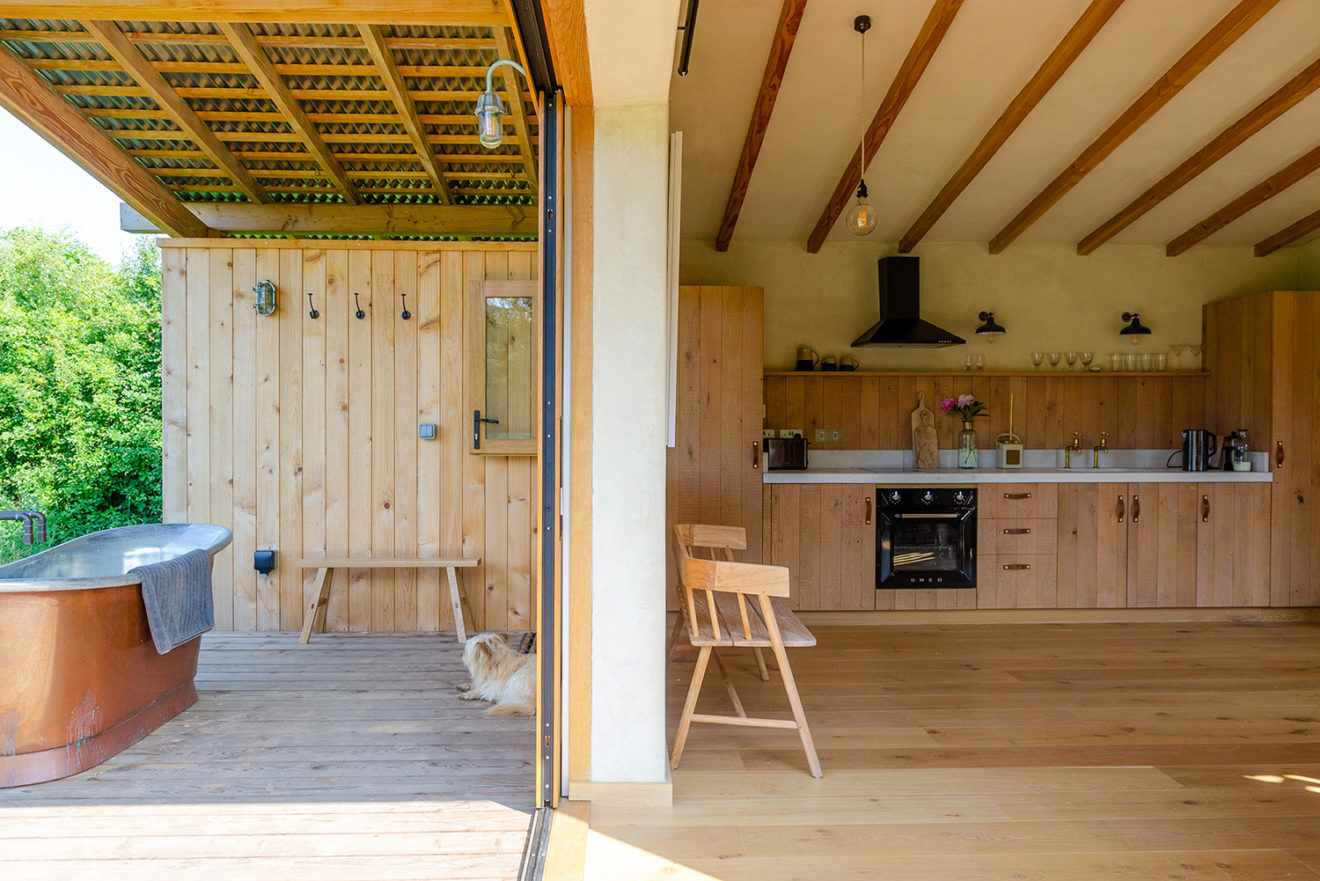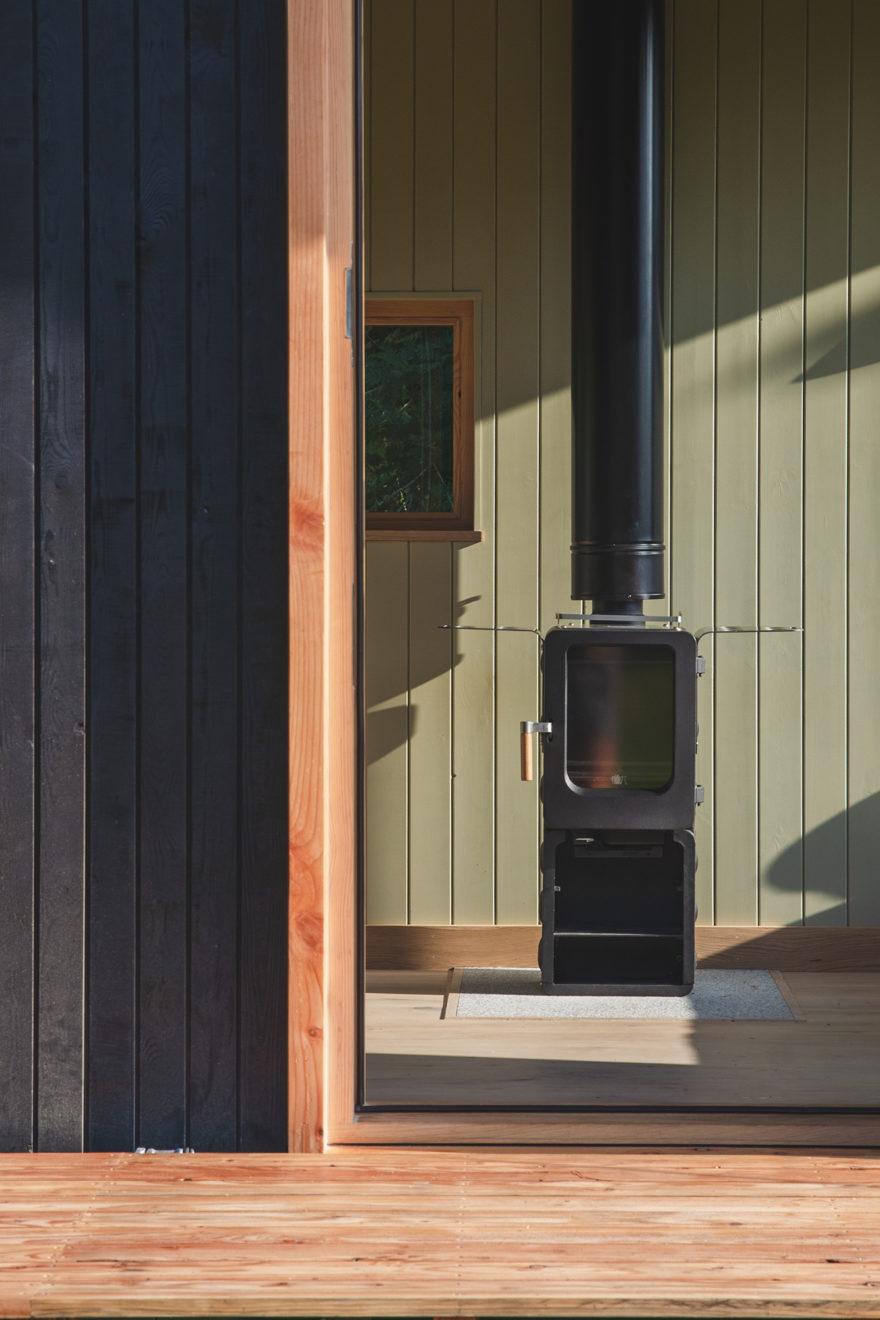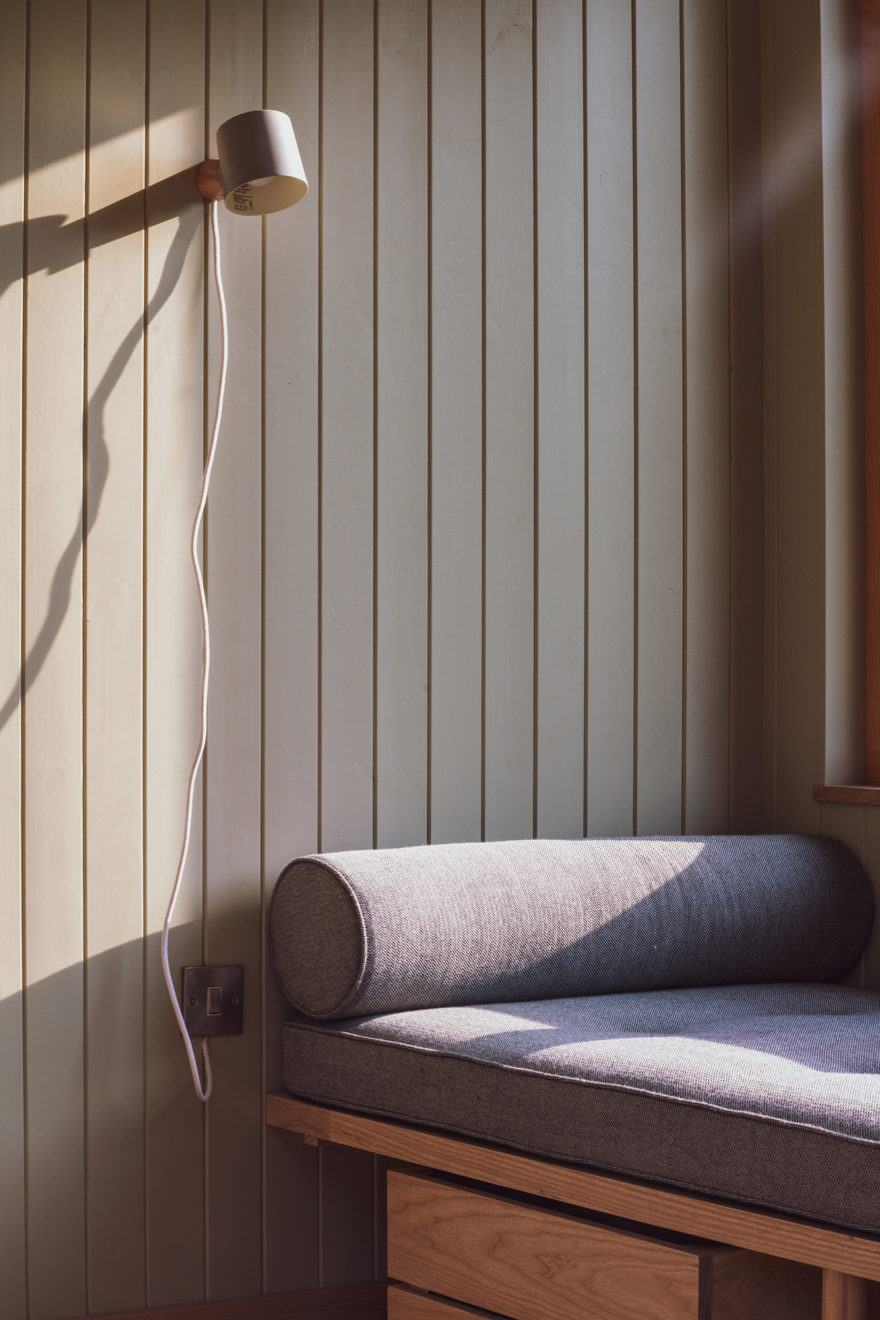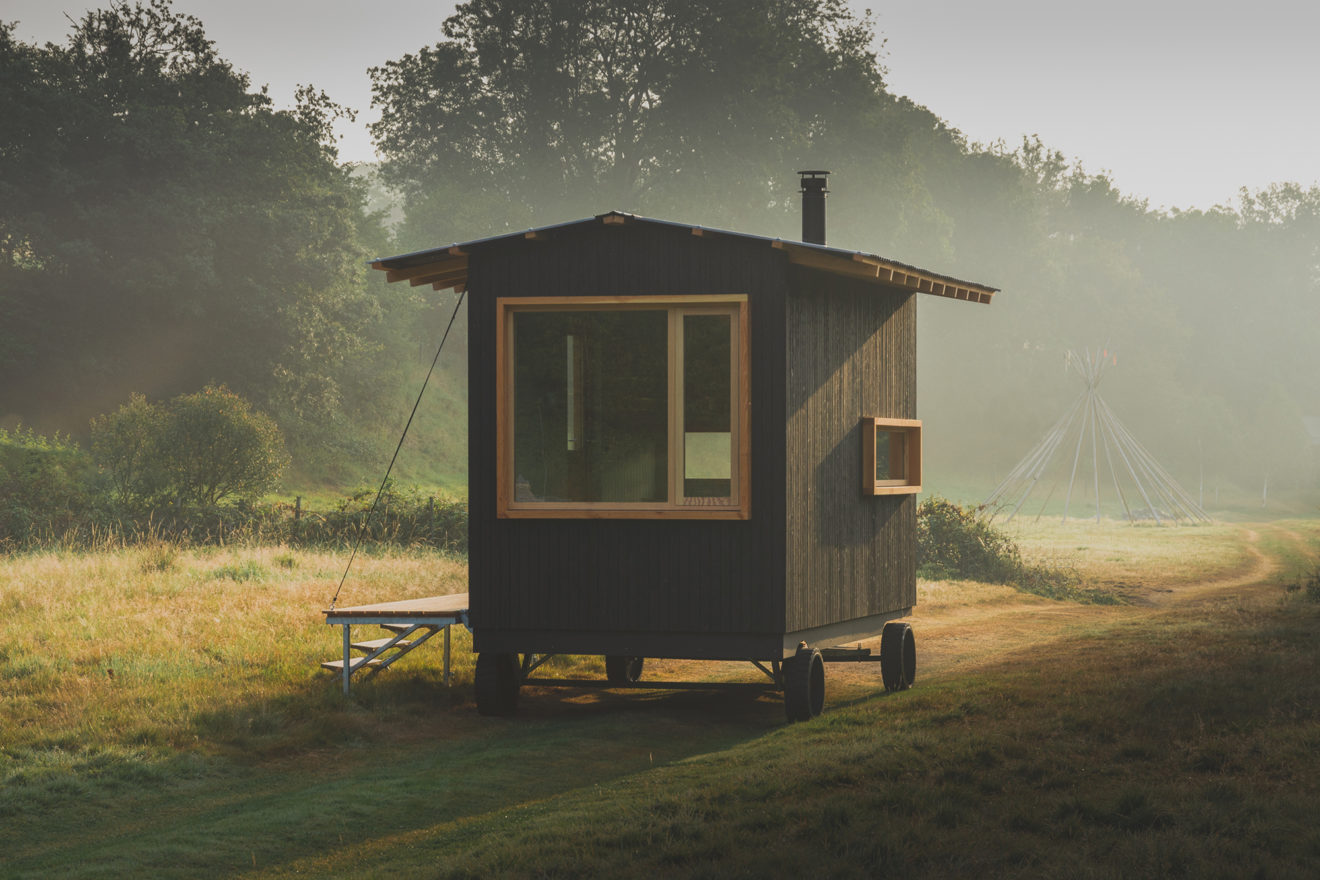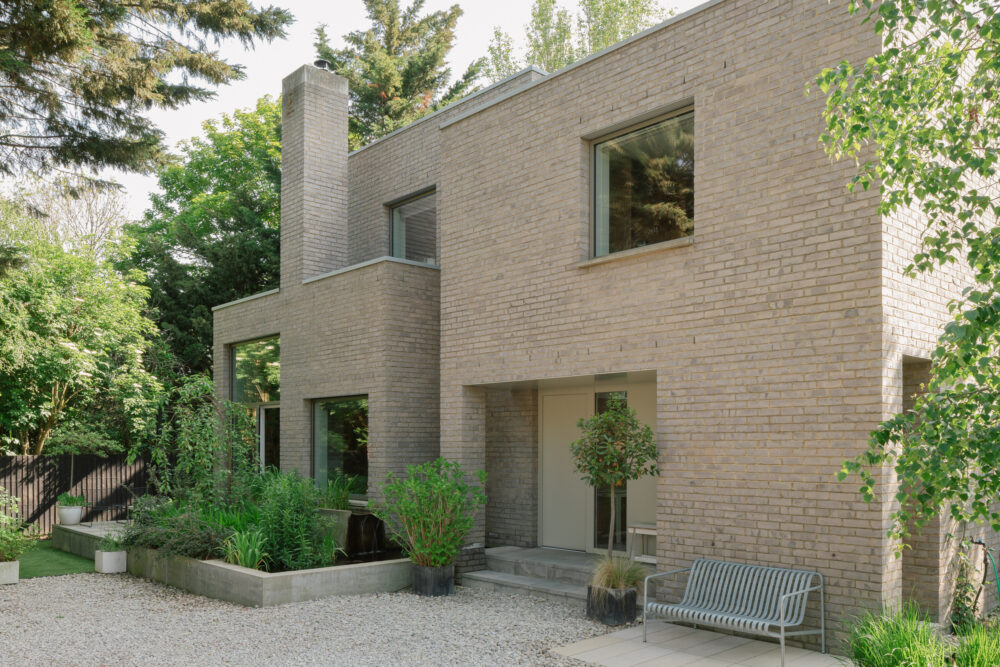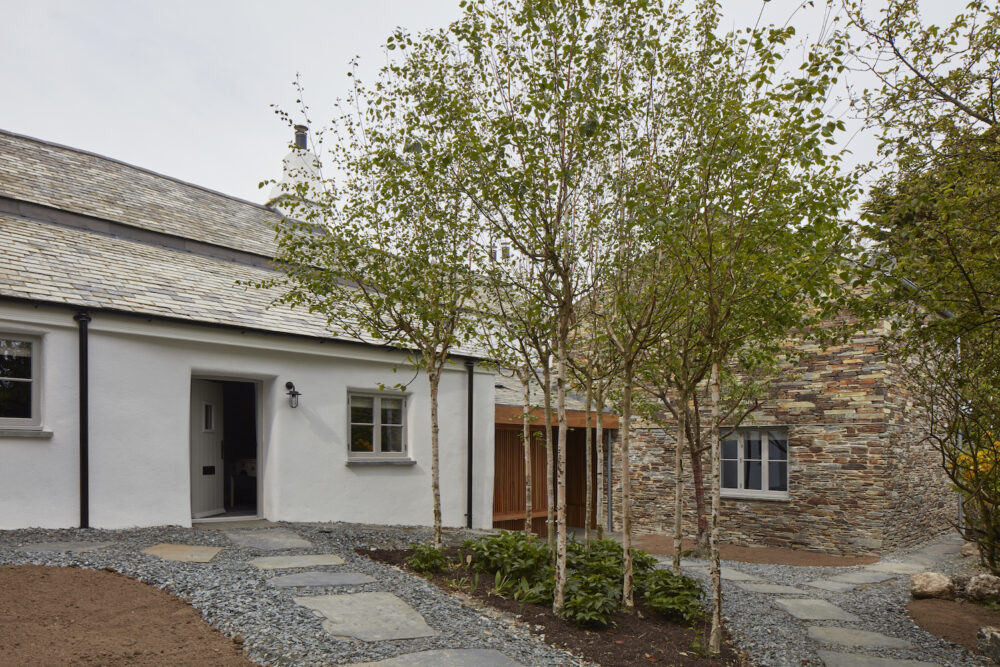Out of the Valley
After relocating to the South West, Rupert McKelvie found himself deeply inspired by the Dartmoor landscape. His desire to live in this environment led him to build an off-grid cabin, sowing the seed for what would become Out of the Valley. The team now comprises architects, designers and craftspeople who use modern construction methods dovetailed with a deep respect for traditional craftsmanship to construct off-grid cabins, furniture and interiors; connecting people to nature through every project. Aucoot chats to Rupert to find out what inspired this journey.
Through the summer of 2013 I worked on restoring an old Douglas Fir timber framed barn into a workshop. By 2015 it was finally ready to use so I made the move down from London to Devon, bringing some of my clients with me. I was producing furniture and working with a number of young British artists during this period. So, while these interesting private commissions continued to tick along, I was starting to become really absorbed in the spirit of the deep wooded Dartmoor valley I found myself living and working within. The valley became a direct source of inspiration and I wanted to live as close to it as possible, and that’s when I decided to build my first cabin. From this seed of an idea Out of the Valley was born.
The Oak Cabin was one of my first projects, it wasn’t feasible to run any grid connections to the location so I set about researching all the alternatives – from micro-hydro and solar to bio-digesters and ram pumps. It sparked a real interest in the subject and we now use this knowledge to take other projects off-grid if necessary. It’s certainly a very liberating feeling to be operating autonomously; you’re attuned to the climatic conditions and it heightens your awareness about energy and resource usage in the home.
I recently planted 4000 trees around our workshop in Devon which will be managed for materials and biodiversity in the years to come. The process of planting saplings is a very grounding experience. The word ‘human’ comes from the Latin ‘humas’ – meaning earth – so it’s no surprise we feel such contentment when we have our hands in the soil. For me, nature steadies and anchors me, the intelligence and wisdom of the plant world is slowly becoming more widely acknowledged, any opportunity to connect to that can only be a good thing.
A huge proportion of our built environment now consists of a homogeneous material palette of concrete, steel and glass. Concrete is the second most widely used substance on earth after water, and beyond it’s damaging environmental impacts creates an impenetrable sterile barrier for life with a carbon mass that now outweighs all the trees on earth. We are at a point now where we need to look very differently at the current linear route of design to construction, nomadic tribes have retained at large a circular system of living. The Dorze People of Ethiopia still weave their homes out of bamboo, they are built oversized which allows termites to eat away at the walls; they slowly shrink over their 80 year life. If this knowledge wasn’t passed through the generations the buildings would decompose into history. That couldn’t be said for the current built environment.
What interests me about nomadic shelters is how they’re informed by the immediate materials available in a particular region of the world. The architecture accounts for natural ventilation, warmth and orientation, like the Tipis of native America that face east to meet the rising sun. I bring these ideas into our work at Out of the Valley, connecting our projects to the landscape through the use of considered materials and design. We’re using a lot of plant-based insulations at the moment such as hemp and jute, both are fast growing and sequester large amounts of carbon in their short growing cycles. This carbon is then locked into the project, using wood as our primary building material also does the same.
In my view biophilic design needs to transcend the full cross section of a project to give it authenticity – from foundations to furniture. The use of natural materials, processes and finishes help to root our work into these ideas.
Shelter by Lloyd Kahn
Into the Wild by Jon Krakauer
Let My People Go Surfing by Yvon Chouinard
Both my parents have been a great inspiration – we grew up in rural Gloucestershire. In the late 70s my father purchased a dilapidated Cotswold stone farmhouse. When they moved in only one room was vaguely weatherproof; it had suffered years of neglect. Over the following twenty years Dad pretty much rebuilt every part of the house, sensitively restoring it out of his workshop, a place where I would spend hours helping him sweep up sawdust and playing with off cuts. I still use some of his original hand tools. My Mum was a botanical artist and later became a textile designer, she has a wonderful eye for detail and tone. Mum was a huge supporter of my creativity through school, and it was around this time that I discovered land artists such as Richard Long and Andy Goldsworthy, driving a new direction in my studies. I started working with found items in the landscape and natural processes of weathering. I revisited these sketchbooks when I moved back to Devon and further developed my ice melts into a collection of side tables that were exhibited and sold through the Mint Gallery in Kensington.
One of the first things I did when I moved back to Devon in 2015 was learn to kitesurf – it was something I’d always wanted to try. My workshop is just over 30 minutes from Exmouth, situated in a great spot on a stretch of water which lends itself to be ridden in various wind and tidal conditions. I became instantly hooked and subsequently travelled the South West exploring new locations. Since becoming a father and running a busy business I’ve struggled to find the time, so I’m running and river swimming on Dartmoor more at the moment; either way being out in the elements has deepened my connection to nature.
I think one of my greatest influences was working at my godfather’s hotel in the school holidays. I’d board the train in Cheltenham and travel down to Totnes where I’d be greeted by Richard and we’d head back at speed though the winding lanes to Fingals. He was one of those drivers you didn’t want to meet coming the other way! The hotel was close to the river Dart and it’s where I learnt to sail. I don’t think I would have trained as a classical wooden boat builder if it wasn’t for these childhood experiences, and that has certainly influenced my direction.
Our Quarry Sauna project was an interesting one. Granite rocks were taken from the decommissioned quarry and levelled flat, the building perches on top of these rocks at the water’s edge. We made copper fish scale tiles for the roof – they will turn Verde green over time. I’m looking forward to watching this project age.
We’re currently building a bigger production facility, we have some exciting news around the London Design Festival this September with Planted Cities, and we’re branching into some projects in Upstate New York.
Get a head torch!

